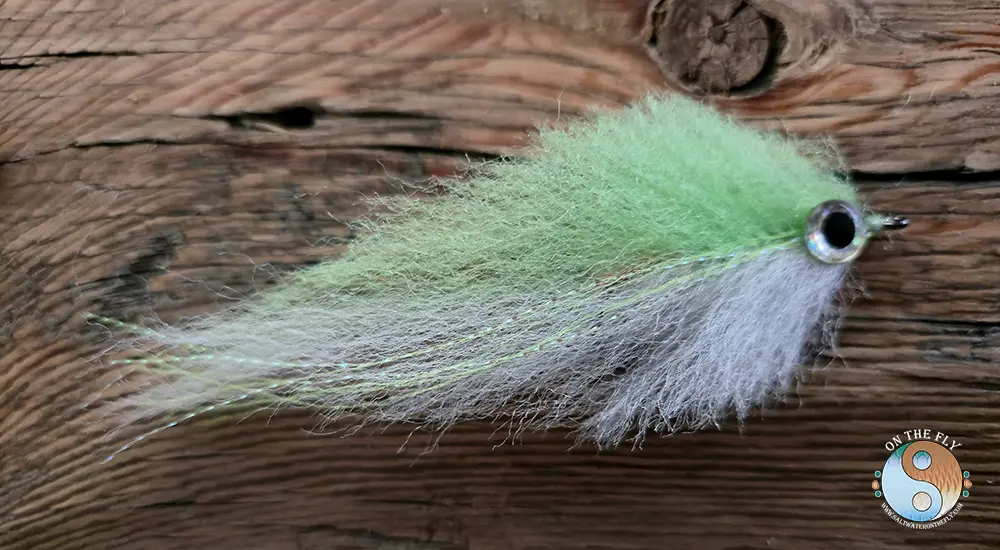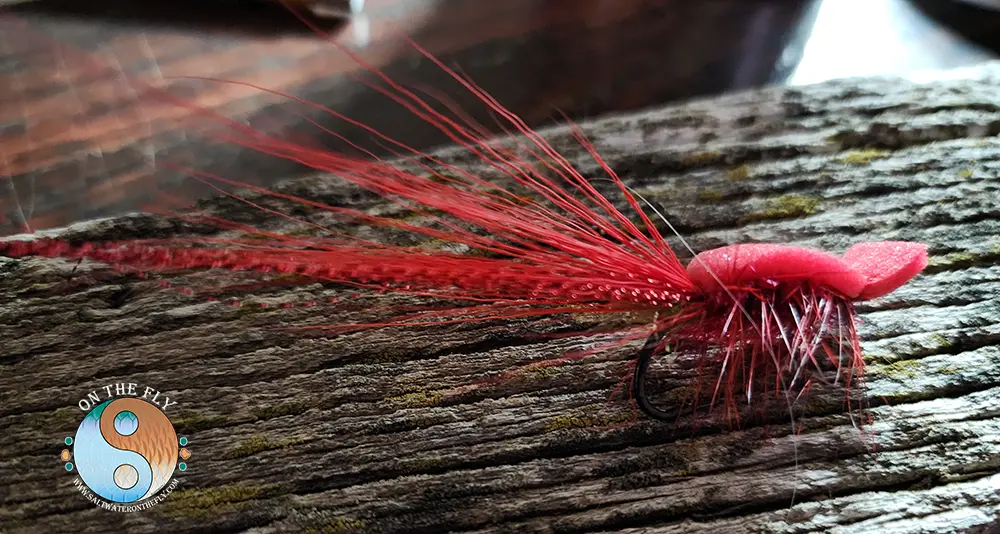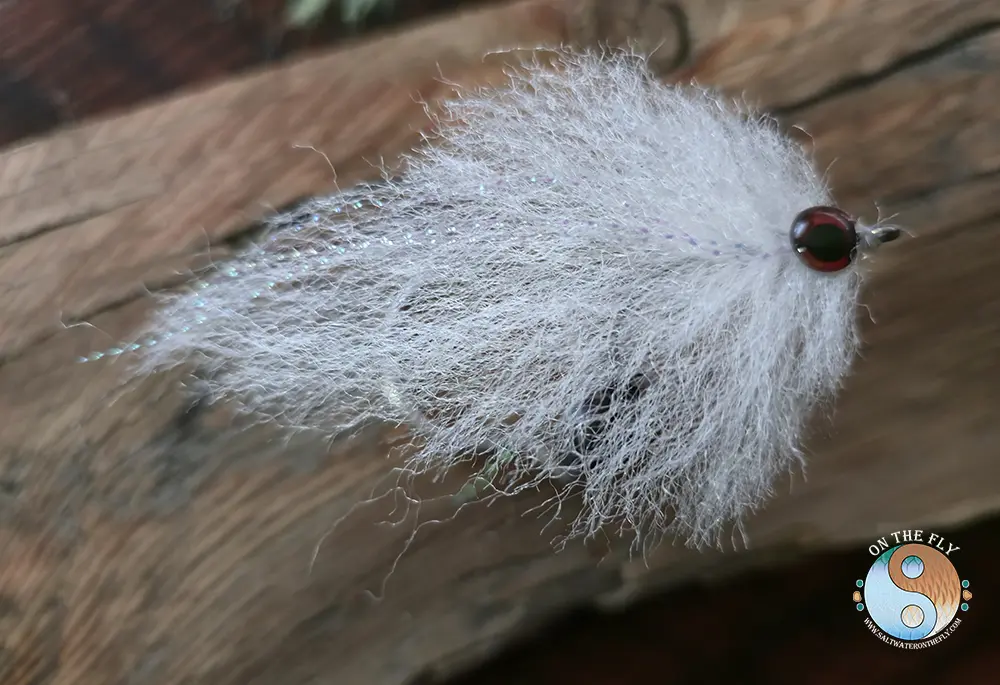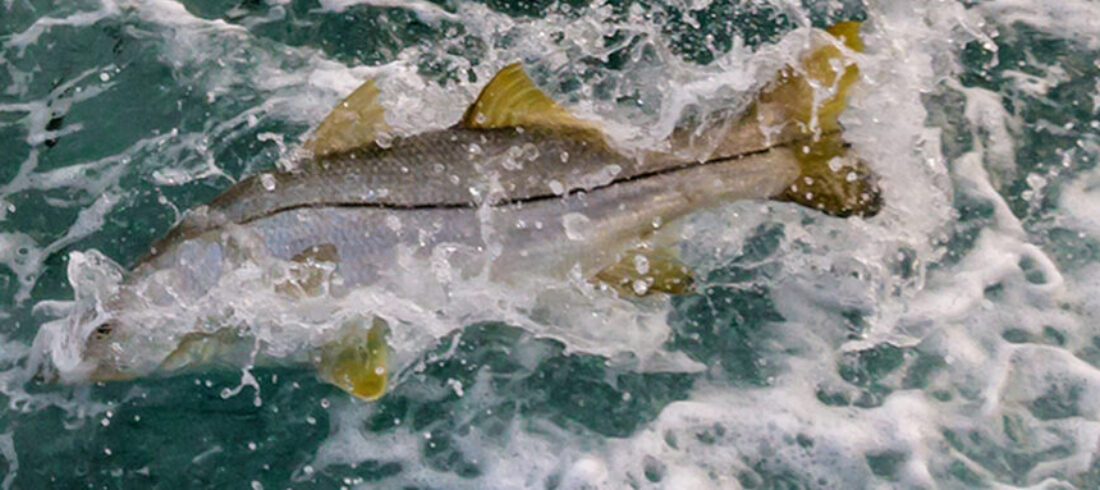Fly Fishing for Snook: 15 Epic Spots, Pro Tips, and Fly Patterns That Slay
If you’ve ever felt that sudden, heart-stopping jolt when a snook absolutely demolishes your snook fly, you understand. You know why these fish are legends on the flats. Snook offer a perfect challenge: stunning looks, powerful fights, and sharp wits.
They lurk in waters so beautiful you might even forget about the buzzing mosquitoes for a moment. These fish will push your casting skills, test your patience, and maybe even expand your vocabulary when they throw the hook. But when you finally cradle one in your hands, it’s like getting a personal nod from nature.
This guide focuses on fly fishing for snook 15 epic spots where you can experience this magic. We will explore these top-notch locations and discuss strategies for targeting these clever ambush predators. You’ll learn about their favorite hideouts, the presentations that trigger a bite, and the snook fly patterns they find irresistible.
Plus, there’s a special section on night snook fishing around fishing docks, because who doesn’t love some after-dark excitement? This information on fly fishing for snook 15 epic spots is delivered with a relaxed tone, a bit of humor, and enough snook knowledge to make you a real threat on the water. Proper fly lines and a sturdy snook fly rod are essential tools for any fly angler pursuing these popular inshore water fish.

Fly Fishing the Mangroves by day and under the stars and dock lights by night chasing Snook is a way of life. Warm days out casting a streamer a lightweight UPF-50 Graphic Hoodie gets the job done. When the sun starts to set a Hydrophobic Heavy Graphic Hoodie fits the need. All Graphic Hoodies have sewn in facemask. Now stripping those streamers and sun protection for your hands is a must. Our Graphic Gloves have a sewn on stripping guard and are UPF-50 sun protection.


Table of Contents
Why Fly Fish for Snook? (Spoiler: They’re Awesome)
Before we get to the specific snook fishing spots, let’s talk about why snook are so captivating. Imagine a fish that looks like it was carved by a master sculptor. This fish fights like it’s trying out for a championship belt.
And it lives in places that will make your social media feed shine. That’s a snook for you. Engaging in snook fly fishing offers a thrilling experience for any fly angler.
They really are the complete package for saltwater fly fishing enthusiasts. Snook are tricky to fool, a thrill to catch, and always ready for a tussle. Pursuing snook with a fly rod, often using specialized fly rods, is like a treasure hunt combined with a good workout, especially when wade fishing the flats.
These fish are intelligent, easily spooked, and can be very selective with the snook fly presented. So, you’ll need to bring your best game when sight fishing for them. But when you make that perfect cast and a florida snook inhales your fly, it’s an unbeatable feeling that many fly anglers cherish.
They hang out in incredible fishing spots too—from mangrove mazes where you fish mangroves to brightly lit fishing docks and sandy beaches, perfect for beach snook. They might hit tiny shrimp imitations or a flashy streamer if you present your fly close to their ambush point. The aggressive nature of snook feed behavior makes them exciting targets; sometimes a fishing report will even highlight recent feeding frenzies.
And the fight? Snook are built like torpedoes with a serious attitude, making every snook caught a memorable event. Expect screaming runs from your large arbor reel, impressive jumps, and a real test for your gear and class tippet. If that doesn’t get your heart pumping, you might want to check your pulse.

Snook Get Excited Over a Chartreuse-White Pelagic Forger Minnow

Pelagic Forger Minnow Blue-White Another Great Baitfish Pattern
Learn more about Pelagic Forger Minnows.
Fly Fishing for Snook 15 Epic Spots: Your Next Adventure Awaits
Snook thrive in warm waters, so our list focuses on their prime snook habitat. These range from Florida snook fishing hotspots, through the Caribbean, and even further south. These 15 snook fishing spots are some of the best available for fly anglers.
They represent prime snook territory where you can truly test your fly-fishing abilities. Each location has its own distinct character, so let’s look at what makes them special. Success often depends on understanding water conditions and tidal flow, as snook are heavily influenced by these factors.
Here’s a quick look at the 15 epic spots we’ll be covering for snook on the fly:
| No. | Location | Why It’s Great | Best Time to Fish |
|---|---|---|---|
| 1 | Everglades National Park, Florida | Vast mangrove wilderness, abundant snook of all sizes, offering many fishing scenarios. | Late fall – early spring |
| 2 | Florida Keys | Crystal-clear flats ideal for sight fishing and targeting trophy snook. | Year-round, summer for larger fish |
| 3 | Indian River Lagoon, Florida | Massive estuary, snook nursery, mix of mangroves, docks, and flats. | Spring and fall |
| 4 | Charlotte Harbor, Florida | Shallow flats meet deeper channels, less crowded with healthy snook populations. | Late spring – early fall |
| 5 | Tampa Bay, Florida | Exciting urban fishing with docks, bridges, and mangrove systems; excellent for night snook. | Year-round, summer nights are prime |
| 6 | Ten Thousand Islands, Florida | Remote labyrinth of mangrove islands, great for kayak fishing and adventurous anglers. | Fall and winter |
| 7 | Biscayne Bay, Florida | Clear flats and mangrove keys near Miami, wary but rewarding snook. | Winter – early spring |
| 8 | Sanibel Island, Florida | Back bays and passes great for wade fishing and targeting beach snook. | Late spring – fall |
| 9 | Pine Island Sound, Florida | Less fishing pressure, mangrove islands, and intricate creek systems. | Year-round, spring is notable |
| 10 | Mosquito Lagoon, Florida | Renowned for trophy snook and excellent sight fishing opportunities in clear water. | Fall and winter |
| 11 | Belize Barrier Reef, Belize | Remote flats and cayes with less pressured snook in a tropical paradise. | April – July |
| 12 | Costa Rica’s Caribbean Coast | Jungle rivers and dynamic surf zones with powerful, aggressive snook. | July – October (rainy season) |
| 13 | Puerto Rico | Underrated destination with lagoons and surf zones holding healthy snook populations. | Year-round, summer often best |
| 14 | Yucatán Peninsula, Mexico | Clear flats and mangrove channels teeming with snook; great for sight fish. | November – March |
| 15 | Cuba | Largely untouched flats and mangrove systems with snook that rarely see flies. | December – April |
1. Everglades National Park, Florida
Why It’s Epic: The Everglades is the heartland for snook, a prime snook area for any serious fly angler. It’s a huge maze of mangroves, winding creeks, and shallow flats where these fish are kings. The area is wild, remote, and packed with florida snook of all sizes, offering countless fishing scenarios.
What to Expect: You’ll be casting your snook fly into tight cover, trying to avoid mangrove roots. You might find yourself hoping your fly doesn’t become a permanent tree decoration while you fish mangroves. The scenery is incredible, featuring alligators, many bird species, and snook as ambush predators waiting for baitfish.
Pro Tip: Fish the outside points and creek mouths on a falling tide, as the current flow concentrates bait. Retrieve your fly quickly; snook here are often aggressive. A good fishing report from local fishing guides can give you recent insights on snook activity.
Best Time: Late fall to early spring is ideal for fishing florida in the Everglades. Water temperatures are cool enough for active snook but still warm enough for comfortable fishing. This is often peak snook season in this region.
2. Florida Keys
Why It’s Epic: The Keys boast crystal-clear flats and backcountry channels, a dream for any fly angler keen on sight fishing. Snook cruise these waters like they own the place, which, in a way, they do. This is a top destination for snook fly fishing.
What to Expect: You’ll spot snook resting in the sun or patrolling the edges of flats, a perfect opportunity to sight fish. This is technical fishing where accuracy is everything. A misplaced cast can send them fleeing, so present your fly close but carefully.
Pro Tip: Stalk the flats carefully with a shrimp fly; many patterns include effective shrimp imitations. Move like a ninja. One clumsy move and they’re gone quicker than free snacks at a party.
Best Time: You can find snook year-round, but summer is when the larger fish often appear. This is when a sturdy snook fly rod and reliable reel are crucial.
3. Indian River Lagoon, Florida
Why It’s Epic: This massive estuary serves as a snook nursery, holding fish from tiny fingerlings to impressive trophies. It offers a great mix of mangroves, docks, and expansive flats. It’s a well-known snook habitat on the Florida east coast.
What to Expect: You can try daytime missions among the mangroves or nighttime action around dock lights; both are productive fishing scenarios. As a bonus, tarpon and redfish might join the snook party. Many fly anglers find success here with various techniques.
Pro Tip: Try fishing the dock lights after dark with a small baitfish fly, perhaps one of the effective white flies. During daylight hours, work the edges of mangrove shorelines where snook feed. Using fishing charters can improve your chances if you are new to the area.
Best Time: Spring and fall typically offer peak snook action in the lagoon. The water conditions are generally favorable during these periods.
4. Charlotte Harbor, Florida
Why It’s Epic: Here, shallow flats meet deeper water, creating perfect ambush points for snook. Charlotte Harbor on the gulf coast is often less crowded than other Florida hotspots but offers equally good fishing. The area supports a healthy snook population.
What to Expect: You might find yourself wade fishing sandbars or drifting over oyster beds. Snook love both types of habitat. Be prepared for windy conditions, which can add to the challenge but also concentrate bait.
Pro Tip: Fish incoming tides using a streamer with a slow, steady strip, mimicking natural bait movement. Snook in this area find it hard to resist a fly that looks like a wounded baitfish. Pay attention to the current flow around structures.
Best Time: Late spring to early fall is generally the most productive period for snook caught here. Water temperatures are ideal for active feeding.
3. Indian River Lagoon, Florida
Why It’s Epic: This massive estuary serves as a snook nursery, holding fish from tiny fingerlings to impressive trophies. It offers a great mix of mangroves, docks, and expansive flats. It’s a well-known snook habitat on the Florida east coast.
What to Expect: You can try daytime missions among the mangroves or nighttime action around dock lights; both are productive fishing scenarios. As a bonus, tarpon and redfish might join the snook party. Many fly anglers find success here with various techniques.
Pro Tip: Try fishing the dock lights after dark with a small baitfish fly, perhaps one of the effective white flies. During daylight hours, work the edges of mangrove shorelines where snook feed. Using fishing charters can improve your chances if you are new to the area.
Best Time: Spring and fall typically offer peak snook action in the lagoon. The water conditions are generally favorable during these periods.
4. Charlotte Harbor, Florida
Why It’s Epic: Here, shallow flats meet deeper water, creating perfect ambush points for snook. Charlotte Harbor on the gulf coast is often less crowded than other Florida hotspots but offers equally good fishing. The area supports a healthy snook population.
What to Expect: You might find yourself wade fishing sandbars or drifting over oyster beds. Snook love both types of habitat. Be prepared for windy conditions, which can add to the challenge but also concentrate bait.
Pro Tip: Fish incoming tides using a streamer with a slow, steady strip, mimicking natural bait movement. Snook in this area find it hard to resist a fly that looks like a wounded baitfish. Pay attention to the current flow around structures.
Best Time: Late spring to early fall is generally the most productive period for snook caught here. Water temperatures are ideal for active feeding.
5. Tampa Bay, Florida
Why It’s Epic: Tampa Bay offers exciting urban fishing with a wild side, a prime example of accessible snook fishing florida. You’ll find fishing docks, bridges, and mangrove systems packed with snook. It’s a gritty, yet awesome, fishing experience that attracts many fly anglers.
What to Expect: Get ready for nighttime heroics under dock lights, a classic night snook scenario. Or, you can try daytime stalking in the shadows of bridges. You’ll feel like a stealthy snook angler navigating these waters.
Pro Tip: Drift a shrimp fly under lighted fishing docks at night; shrimp imitations are very effective. Snook often go crazy for this presentation. It’s a classic tactic for a reason.
Best Time: Snook are available year-round in Tampa Bay, but summer nights can be truly exceptional. Local fishing reports often highlight the abundance of snook during these times.
6. Ten Thousand Islands, Florida
Why It’s Epic: This is a remote labyrinth of mangrove islands and waterways teeming with snook, a truly wild snook area. It’s a rugged area, can be buggy, but the fishing rewards are well worth the effort. Many consider this one of the top fishing spots in Florida.
What to Expect: Most fishing here is done from a kayak or skiff, making kayak fishing a popular method. You’ll navigate through narrow mangrove tunnels and explore outer islands where snook feed. Snook are plentiful if you know where to find them in this snook habitat.
Pro Tip: Fish the outer islands during high tides when snook move into shallower areas. As the water drops, retreat into the creeks and inner bays. Don’t forget to pack insect repellent; you will be glad you did, especially when exploring tight cover.
Best Time: Fall and winter generally offer the best fishing conditions. Cooler water temperatures make for active fish and fewer bugs.
Need a break from the heat and humidity. Head to Montana for some Rocky Mountain Fly Fishing.
Gurgler get Snook excited and there is nothing as exciting as a surface take. A startling explosion of water and fish. Red Demon Gurgler is a great snook attractor.

7. Biscayne Bay, Florida
Why It’s Epic: Located just minutes from Miami, Biscayne Bay has clear flats and mangrove keys. These areas are loaded with snook, providing a fantastic urban-adjacent paradise for anglers. It’s a well-known location for Florida snook.
What to Expect: You can enjoy sight-fishing on the flats or probing mangrove pockets for cover snook. Snook in Biscayne Bay are known for being wary, but the challenge is part of the fun. They are worth the effort when you finally connect.
Pro Tip: A 9-weight fly rod is a good choice for handling these powerful fish and casting in potential wind. Target laid-up fish with careful casts. Accuracy almost always beats sheer casting power when presenting flies snook might inspect closely.
Best Time: Winter to early spring is often the prime time to target snook here. The snook season often peaks when water temperatures are moderate.
8. Sanibel Island, Florida
Why It’s Epic: Sanibel is famous for its shells, but its back bays and passes are pure gold for snook anglers. It’s a relaxed and very fishy environment. You can combine a family beach trip with some serious fishing for beach snook.
What to Expect: Wade fishing the flats or fishing tidal passes are both productive methods for finding snook. Be mindful of stingrays when wading; always shuffle your feet instead of taking big steps. This is a common tactic when fishing florida shallow waters.
Pro Tip: Focus your efforts on the passes during tide changes, using a streamer pattern to mimic baitfish caught in the current flow. Dawn is often your golden hour for the best action, as snook feed actively in low light.
Best Time: Late spring through fall generally provides good snook fishing opportunities. The variety of fishing scenarios keeps anglers returning.
9. Pine Island Sound, Florida
Why It’s Epic: This spot is a bit of a hidden gem on the gulf coast, with less fishing pressure and plenty of snook. Mangrove islands and intricate creek systems define the fishing here. It’s a beautiful place to explore, especially if you enjoy kayak fishing.
What to Expect: Skinny-water stalking from a kayak or stand-up paddleboard is a popular approach. The fishing can be peaceful and quiet until a snook explodes on your snook fly. This area offers a classic sight fishing experience.
Pro Tip: Probe the mangrove islands with a well-placed shrimp fly or small clouser minnows. Stealth is your most valuable tool in these calm waters, so present your fly close but gently. Fishing guides can show you the most productive spots.
Best Time: Snook fishing can be good year-round, but spring often stands out as particularly productive. The water temperatures are usually just right for active snook.
10. Mosquito Lagoon, Florida
Why It’s Epic: As part of the Indian River Lagoon system, Mosquito Lagoon is renowned for trophy snook. It offers epic sight-fishing opportunities. The clear water makes spotting these water fish a common occurrence for the prepared fly angler.
What to Expect: You’ll look for snook pushing wakes on shallow flats or resting near mangrove cover snook prefer. It’s a visual feast for any angler who enjoys sight casting. This is challenging but very rewarding when a large snook is caught.
Pro Tip: Cast to waking fish or snook you see laid-up. Timing is crucial; don’t rush your cast and spook the fish. Using the right fly lines for delicate presentations is important here.
Best Time: Fall and winter are generally considered the best seasons here for snook fishing florida. Cooler weather often means clearer water and active fish.
11. Belize Barrier Reef, Belize
Why It’s Epic: Belize offers remote flats and cayes where snook see very few flies. This makes for a tropical snook paradise with less pressured fish. The Belize Barrier Reef is a stunning backdrop for snook fly fishing.
What to Expect: You can wade turtle grass flats or fish from a poled skiff with local fishing guides. The breathtaking scenery is as good as the world-class fishing. Prepare for diverse fishing scenarios, from flats to mangroves.
Pro Tip: Hiring a local guide is highly recommended for navigating these waters and finding snook. Fish the edges of grass beds with a shrimp fly; it’s often the key to success for these ambush predators. Be ready for strong fights.
Best Time: April to July often brings excellent snook fishing. The weather and water conditions are typically very favorable for active snook feed patterns.
12. Costa Rica’s Caribbean Coast
Why It’s Epic: This area features jungle rivers and dynamic surf zones packed with powerful snook. It’s a raw and rugged fishing environment that offers a serious challenge. These fish are known for their strength and aggressive takes.
What to Expect: You’ll be casting at river mouths or directly into the surf for beach snook. Snook here are often large and aggressive, so bring stout fly gear, including robust fly rods and reels with strong drags. You’ll likely encounter snook in deeper water near river mouths.
Pro Tip: Fish the river mouths during the rainy season with a large streamer, as the current flow pushes bait out. When a big snook hits, hang on tight; they are powerful. Check local fishing report information if possible.
Best Time: July to October is typically the peak season, coinciding with the rains that stir up the snook habitat. This is prime time for big snook caught.
13. Puerto Rico
Why It’s Epic: Puerto Rico is an underrated yet awesome destination for snook. Its lagoons and surf zones hold healthy populations of fish. It’s a true sleeper hit for Caribbean snook adventures, offering various fishing spots.
What to Expect: Plan for dawn sessions in the lagoons or exciting action in the surf. Topwater strikes are a definite highlight of fishing here, often very explosive. Kayak fishing can be very productive in the lagoons.
Pro Tip: Throw a popper fly at dusk in the lagoons. Snook have a hard time resisting a well-worked popper. You might get some big blow-ups from these popular inshore predators.
Best Time: Snook can be caught year-round, but summer often provides the best overall action. Water temperatures are conducive to active feeding.
14. Yucatán Peninsula, Mexico
Why It’s Epic: The Yucatán features clear flats and mangrove channels teeming with snook. It’s a Mexican masterpiece for inshore fly fishing. The diverse habitats offer many opportunities for the dedicated fly angler.
What to Expect: Sight-fishing in lagoons or probing mangrove-lined estuaries are common tactics. Snook in this region frequently inhabit very skinny water. Be ready for close-quarters casting to cover snook prefer.
Pro Tip: Fish near areas like Tulum with a subtle shrimp fly pattern; shrimp imitations are very effective. Keep your presentations delicate as these snook can be quite spooky. Good fly lines and a long foot leader can help.
Best Time: November to March usually offers good conditions for snook fishing. This period avoids the hottest weather and hurricane season.
15. Cuba
Why It’s Epic: Cuba boasts largely untouched flats and mangrove systems. The snook here rarely see anglers or artificial flies. This makes it a fly fisher’s dream destination for a pristine snook habitat.
What to Expect: Most snook fishing is done from skiffs, particularly along the southern coast. Mangroves are notorious fly eaters, but the snook lurking within are worth the risk. Hiring fishing charters with experienced local guides is essential.
Pro Tip: Using a local guide is vital. Bring plenty of extra flies, as you’ll likely lose some to the mangroves, but you’ll hook more fish with their help. Patterns include various baitfish and shrimp imitations.
Best Time: December to April is generally the prime season snook fishing in Cuba. The weather is typically stable, and fish are active.
How to Target Snook with a Fly (Without Losing Your Cool)
Snook are like the cool kids of the fish world. They can be aloof, unpredictable, and sometimes downright maddening. But with the right game plan, you can certainly outsmart these ambush predators.
Best Times and Conditions
Tides are crucial for snook fly fishing. Snook absolutely love moving water. The last hour of an incoming tide and the first hour of an outgoing tide are often prime time.
This is when baitfish are on the move due to the tidal flow, and snook are actively feeding. You can check NOAA tides data for local information. Weather plays a big role too; overcast days can make snook feel safer and roam more freely.
What about cold fronts? Not good, as snook often become lethargic when water temperatures drop significantly. For time of day, dawn and dusk are peak periods for snook feed activity. Snook are largely nocturnal feeders, so low light conditions often mean more action, making night snook fishing productive.
A full moon can also enhance night fishing activity around fishing docks. Understanding these water conditions is vital for success.
Gear and Equipment
For your snook fly rod, an 8-weight to 10-weight is usually the sweet spot. You need enough backbone to wrestle snook away from mangroves and dock pilings. Fly rods in this range provide versatility for different fishing scenarios.
When it comes to reels, go for one with a sealed drag system and a large arbor for quick line pickup. Snook will test your drag and can make short work of cheap reels. A loud, screaming drag is a bonus; it’s the sound of victory for many fly anglers.
A floating line is king in shallow water and for most snook habitat. But an intermediate line can be very useful in deeper water, deeper cuts, or strong currents, helping your fly get down into the water column. Your choice of fly lines will depend on the specific conditions.
For leaders, a 9 to 12 foot leader tapering to 20-pound to 30-pound fluorocarbon is standard. You should also add a 40-pound to 60-pound fluorocarbon class tippet, as snook have raspy mouths and often hang around sharp structure. This bite tippet section of your leader is essential.
Technique Basics
Casting accuracy trumps sheer distance when fly fishing for snook. Snook often hold very tight to cover like mangrove roots or dock pilings. So, you need to put that snook fly exactly where it counts, often very fly close to the structure.
Stealth is also incredibly important. Move slowly and make soft casts, especially when wade fishing or kayak fishing. Snook are easily spooked, sometimes vanishing faster than a cat when it hears a vacuum cleaner.
Patience is a virtue for any fly angler. A snook might follow your fly several times before committing to a strike. Don’t yank the fly away prematurely; let them decide to eat it.
Where to Look for Snook (They’re Sneaky Little Devils)
Snook are masters of the ambush. So, they are almost always found near some sort of structure, current, or concentration of bait. Here’s a rundown of where to hunt them down in their preferred snook habitat.
Mangroves
Mangrove roots are like snook condominiums, offering excellent cover snook utilize. They offer both protection and a ready food source in one convenient package. Fishing mangroves effectively requires precise casting.
Focus your efforts on points, pockets within the shoreline, and the mouths of creeks. These are areas where baitfish often get funneled by the current flow, making them prime feeding spots for snook. A well-presented snook fly here can be deadly.
Docks and Bridges
Pilings and the shadows they cast are absolute snook magnets, especially fishing docks with lights for night snook. These structures provide cover and ambush points. Many a snook caught comes from these locations.
Always try to fish the down-current side of pilings and other structures. Snook are often lazy opportunists and will position themselves to grab prey that drifts by. This is a common tactic in snook fly fishing.
Flats and Grass Beds
Snook often cruise the edges of flats or lie in wait in potholes on grass beds. This is classic sight fishing territory. In very skinny water, look for wakes or even tails breaking the surface; these are telltale signs that snook are actively hunting.
These are areas where you can sight fish for cruising snook. Presenting shrimp imitations or small baitfish patterns can be very effective in these fishing spots.
Beaches and Surf
During the summer months, snook frequently patrol troughs and cuts along sandy shorelines, becoming beach snook. Keep an eye out for showers of baitfish erupting from the water. This usually means predators like snook are nearby and actively feeding.
Wade fishing along the beach at dawn or dusk can be highly productive. Look for structure like jetties or submerged rocks as well. This can be an exciting way to target florida snook.
Pro Tip: If you see birds diving or baitfish acting frantic, there’s a very good chance snook are in the mix. Always follow the chaos; it often leads to fish. This applies to many fishing scenarios, not just snook.
Effective Presentations for Snook (Make ‘Em Eat It)
Snook can be famously picky eaters at times. But the right presentation can turn a tentative look into an aggressive strike. Here’s how to serve up your fly like a pro.
The Strip
Vary your retrieve. Use fast, erratic strips to trigger a reaction from fired-up snook. For more lethargic or wary fish, a slow and steady retrieve often works best.
Try to mimic the movement of wounded or fleeing prey. Adjust your strip based on the water conditions and the behavior of the snook feed. Observation is key.
The Pause
Snook really love a fly that stops suddenly. Try a strip, then pause, and let the fly sink for a moment, allowing it to drop in the water column. They frequently hit the fly on the drop or during this pause.
This can be a deadly tactic, especially with flies snook inspect closely. The pause gives them a chance to commit. Many snook caught fall for this trick.
The Pop
When using topwater flies like Gurglers, a subtle pop followed by a pause is important. Get ready for some explosive surface strikes. These can sometimes wake the neighbors if you’re fishing near residential areas during night snook excursions.
This technique is especially effective in low light or when snook are actively feeding on the surface. The disturbance mimics struggling bait.
Accuracy
It’s vital to put the fly right in their strike zone. This usually means within a foot or so of the cover snook are holding near, or directly in their path if they are cruising. Snook are not generally willing to chase a fly very far from their ambush spot.
Practice casting to targets to improve your ability to deliver the fly close. This skill is paramount for success, especially when dealing with tight cover.
Pro Tip: Always remember to strip-set when a snook eats your fly. Don’t trout-set by lifting the rod tip. If you lift the rod, you’ll likely pull the fly out of the fish’s mouth and lose both the fish and a bit of your dignity.
Top Fly Patterns for Snook (The Fly Box MVP Lineup)
Snook aren’t necessarily fly snobs, but they definitely have their favorites. Here is the essential list of patterns that will consistently get you bites. These are the flies snook find hard to resist, and the patterns include options for various conditions.
- Clouser Minnow: This is the undisputed champion, often called the GOAT (Greatest Of All Time) of baitfish patterns. Colors like white/chartreuse or tan/white perfectly mimic small baitfish. You can fish it deep or shallow; snook simply don’t care, they just eat these clouser minnows. You can find great options at fly shops like Orvis fishing store.
- Seaducer: This fly offers a subtle and sexy movement in the water that seems to scream “eat me” to snook. The red/white combination is a classic snook slayer. It has a pulsating action that fish find hard to resist.
- Pelagic Forger Minnow: These flies are known for being realistic and durable. They are ideal for fishing in big water or areas with strong currents. Tie them in natural baitfish colors for the best results; many patterns include these natural shades.
- Gurgler: A Gurgler creates topwater chaos in a relatively small package. Fish it slowly with distinct gurgles and pauses. Snook really love that gurgle-and-pause presentation, often leading to explosive surface takes.
- Shrimp Patterns: Tan or olive colored shrimp flies are deadly effective shrimp imitations. They work especially well in skinny water or when fished under dock lights at night. Keep these patterns simple and relatively small for the best success. Consider white flies for dock lights as well.
Pro Tip: Make sure to carry a range of sizes and colors for each pattern. Snook can get quite choosy at times, so being able to match the local baitfish—or at least fake it well—is important for getting a snook caught.

White Pelagic Forger Minnow is Like Candy to Snook
How to Fly Fish a Pelagic Forger Minnow for Snook
Why the Pelagic Forger Minnow?
Hey, fly fishing fanatics! The Chartreuse-White Pelagic Forger Minnow is your secret weapon for snook. This fly’s got flair—chartreuse pops like a neon sign in murky water, while white keeps it real, imitating baitfish like mullet or pilchards. Snook, those sly coastal predators, go nuts for its wiggly EP fiber action. Perfect for Florida flats, Texas shorelines, or any snook hangout!
Retrieve Technique for the Pelagic Forger Minnow Snook Fly Fishing
Time to dance! Strip that Chartreuse-White Pelagic Forger Minnow in short, jerky bursts—think scared baitfish, not chill turtle. Mix it up: fast strips, slow strips, then a pause to tease a strike. Snook follow like curious cats; that hesitation might just land you a lunker. Keep it lively, or they’ll swipe left on your fly!
Night Fly Fishing for Snook Around Docks (The Midnight Hustle)
Catching snook during the day is cool, for sure. But nighttime dock fishing for snook is an entirely different experience. Those glowing lights beneath fishing docks turn the area into an all-you-can-eat snook buffet, and you are invited to the feast targeting night snook.
Find the Glow
Submerged dock lights attract tiny baitfish and shrimp. These, in turn, attract hungry snook. Generally, the brighter the light, the better the potential for attracting bait and predators. Look for established lights that have been there a while, creating a consistent snook feed zone.
Fly Choice
Small baitfish or shrimp fly patterns are usually the rule for dock light fishing. White flies or patterns with glow-in-the-dark materials can really stand out in the murky light. These help snook locate your offering among the other baitfish.
Presentation
Cast your snook fly to the edge of the light line, where the bright light meets the shadow. Let the fly drift naturally with the current flow into the lit area. A slow, steady retrieve can also work very well. Snook are often suckers for an easy meal under the lights.
Stealth Mode
Snook tend to be less spooky at night compared to daytime. But don’t get too cocky about it. Keep your casts soft and try to avoid making loud splashes or noises on the dock. Stealth still pays off, even when targeting night snook.
Safety First
Always wear a headlamp so you can see what you’re doing. Watch your step carefully, especially on unfamiliar docks. You don’t want to trip over a cleat or a forgotten crab trap. Night fishing is wonderfully serene; don’t spoil it with an unexpected swim. Bringing a fishing buddy is also a good idea for safety and company.
Pro Tip: If you aren’t getting any bites, don’t hesitate to switch your fly size or color. Snook can still be divas and act picky, even in the middle of the night. Experiment with different flies snook might prefer.
Conservation and Ethical Fishing (Keep the Snook Party Going)
Snook populations have faced some rough patches in the past due to factors like cold weather events and habitat loss. But, thanks to good management and fly angler conservation efforts, they are bouncing back in many areas. Let’s all do our part to keep it that way and protect the snook habitat.
Always practice catch and release when possible, especially with larger breeding fish. Consider using barbless hooks; they make releasing fish much easier and less harmful. Always wet your hands before handling a snook to protect their sensitive slime coat.
Minimize the amount of time the fish is out of the water. Ideally, keep them in the water as much as possible while you unhook them. You can learn more about best practices from organizations like the Bonefish & Tarpon Trust conservation group.
When you do handle a snook, support its body properly. Don’t squeeze the fish too tightly. If you’re taking photos, make them quick, then let the fish swim away strongly.
Always know and follow the local fishing regulations regarding snook season and size limits. Some areas or times of year are strictly catch-and-release for snook. Big snook are vital breeders, so treat them like the royalty they are for future season snook fishing.
Pro Tip: If you plan to measure a snook, wet your measuring tape before laying the fish on it. A dry tape can scrape off their protective slime layer and cause unnecessary stress to the fish. Responsible handling ensures more snook caught in the future.
Conclusion of Fly Fishing for Snook 15 Epic Spots
Fly fishing for snook is truly a wild ride. It’s a perfect blend of skill, a bit of luck, and a whole lot of fun for any fly angler. From the tangled mangrove mazes of the Everglades to the neon-lit fishing docks of Tampa Bay, these remarkable water fish will push you to your angling limits.
They will most certainly leave you grinning like a fool after a great catch or a missed opportunity. You now have the rundown on fly fishing for snook 15 epic spots. You’ve got the targeting tricks, insight into their hideouts, the effective presentations, and the must-have flies snook adore to make your snook adventures happen.
Plus, you’re even ready to tackle the night shift for night snook at the dock lights like a seasoned pro. This knowledge about fly fishing for snook 15 epic spots should set you up for success. Whether you prefer wade fishing, kayak fishing, or hiring fishing charters, the pursuit of florida snook is always rewarding.
So, grab your favorite snook fly rod and pack your fly box carefully. It’s time to hit the water and chase some snook. These incredible fish are out there, waiting to test your skills and maybe even steal one of your favorite snook fly patterns.
If you hook a monster and it inevitably breaks you off on a sharp oyster bar or mangrove root, just laugh it off. That’s part of the game when fly fishing for snook. There’s always another tide, another cast, and another chance to connect with snook greatness. Tight lines from one fly angler to another, and may all your snook dreams come true on the water.






